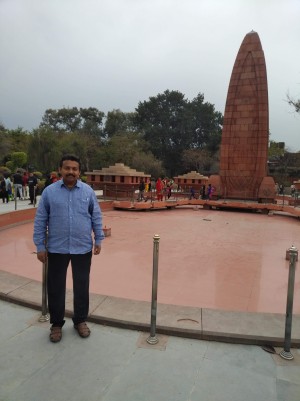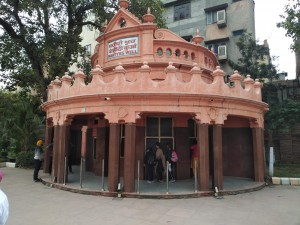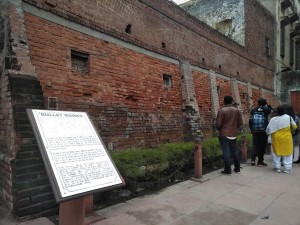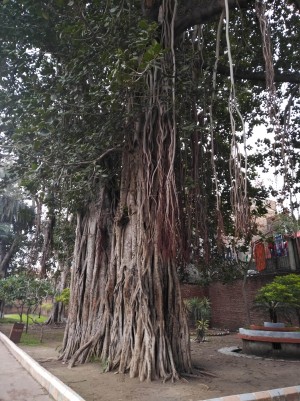Tenali, Andhra Pradesh Aug 9, 2022 (Issuewire.com) - Dr. James Morely M.A., M.Ed. Ph.D
Principal, Montessori E.M School, Tenali,
Founder-Director, British Institute of English Eluru. Andhra Pradesh
————————————————————————————
ABSTRACT: This article is intended to elucidate the events of the day, known as Black Sunday in British India. The day when men in authority brutally killed their subjects for non-violent revolt. It was in fact retaliation for the murder of five Europeans who had been killed by Indians, in retaliation to the shooting and killing of 30 Indians who had marched protesting the arrest and deportation of Dr. Kitchlew and Dr. Satyapal on the 10th of April. A hundred years old wound in India that is still unhealed, because, no official apology has been made so far by the British Government, for the brutal massacre of more than 1500 people, including women and children at Jallianwala Bagh. Repeated demands from Indians across the world for an apology from the British government have been given a deaf ear.
Keywords: Black Sunday, Jallianwala Bagh, 1919 April 13, Reginald Dyer, Dr. Kitchlew, and Dr. Satyapal
A pall of gloom engulfed the city of Amritsar, in Punjab, on the evening of April 13, 1919, on a Sunday a hundred years ago from now. It was the eve of Baishaki, an occasion for celebration for both the Sikhs and Hindus, as it marked the Sikh New year and a harvest festival for both. The city was crowded with pilgrims to the Golden Temple which included farmers, traders, and merchants attending the annual Baisakhi horse and cattle fare. After their visit to the temple and the trade centres, by afternoon the family groups had retreated to Jallianwala Bagh, a garden adjacent to Golden Temple, to take a rest and get rid of their weariness. Some of them relaxed under the trees while others took nap in the sun on the sheet of grass that carpeted the garden. Children in the age group of 3 to 12 made merry by running around and playing with their friends. Some of the men were playing cards in a picnic mood, while few others were expectant of a meeting about to take place. The meeting had been convened at 4.30 p.m. for condemning the deportation of Dr. Saifuddin Kitchlew, a Muslim, and Dr. Satyapal a Hindu, who together had made the Hindu-Muslim fraternity possible and who were ardent proponents of Gandhiji’s concept of Satyagrah in protesting the atrocities of British rule. As informed, the meeting was to be presided over by Lala Kanhya Lal, a highly respected crowd-puller-leader in Punjab those days, and many in the crowd were eagerly waiting to listen to his lecture. Unlike the previous years of the eve of Baishaki, this day, the garden was more crowded as many farmers, traders, and merchants attending the annual Baisakhi horse and cattle fair, drifted to Jallianwala Bagh, when the city police forcefully closed the fare at 2 O'clock in the afternoon. The estimated number of people in the garden gathered for different reasons was more than twenty thousand.
Soon! In a quick succession of events! the gleeful garden underwent a cataclysmic transformation; the meeting had started peacefully at around 4.30 p.m. but there was the conspicuous absence of Lala Kenya Lal, instead, a man named Hans Raj, known for his dubious nature, was addressing the audience; an aeroplane was found hovering low over the gathering and when people panicked Hans Raj emboldened them saying not to be afraid. All of a sudden around 5.15 p.m. the narrow entrance to the garden was closed with the armoured vehicles and Brigadier-general Reginald Edward Harry Dyer with his team of 50 armed soldiers marched into the garden and took the position, 25 of them at his right and 25 of them at the left, approximately fifty yards away from the gathering. Without any warning to disperse, within seconds of their arrival, the soldiers started firing at his orders. Some of the soldiers when fired in the air, Dyer shouted, “Fire low, Fire low, and for what else have you been brought here?”
The garden that was filled with hustles and bustles, giggles and chuckles soon turned out to be a battlefield echoing with the whistling of the bullets, wailing of the wounded, crying of the children, and howling of the crowd that panicked and stampeded for an exit to escape. In a short span of 10 minutes, everything and everyone in the garden got either sprinkled with or drenched and bathed in warm blood, gushing out from fresh wounds. Heads were cut open, eyes were pierced through, noses were split, chests were holed, arms were broken, and knees were opened. The blood that poured out from the wounded and the dead, made streams and flowed filling the narrow fissures on the ground and pooled and flooding the areas lying low.
10 minutes! 1650 rounds of firing! 1500 dead on the spot! 3600 wounded and many of them disabled-permanently! Alas! One of the bloodiest massacres in human history had just been executed at the behest of Sir Michael Francis O’Dwyer the Lieutenant Governor of Punjab in British India. The shooting stopped only because the ammunition had run out. The day, 13 April 1919 came to be called ‘Black Sunday’ yelling out the brutality of the British officers. Mr. Seymour an Officer with magisterial powers seems to have once said, “One thousand Indians would be killed for a single European life”. They were in fact avenging the murder of five Europeans who had been killed by Indians, in retaliation to the shooting and killing of 30 Indians who had marched protesting the arrest and deportation of Dr. Kitchlew and Dr. Satyapal on the 10th of April. After the attack on the five Europeans, the British officers were angered and provoked and so they planned a massive vengeance and executed successfully in a conspiracy with Hans Raj who played a double role; that of a patriot to the Indians and an informer to the British.
Innocent people were in fact trapped by the British officers and Hans Raj, according to a plot that they had hatched. Due to the dubious nature of Hans Raj, he often lost his jobs and finally, he managed to get on the waitlist for a job in the police department, and for the time being, he was working as an informer for the police. So it was easy for the British officers to get him into their fold. With definite personal aims, he often volunteered to organise meetings and this made him acquainted with people like Dr. Satyapal and Dr. Kitchlew he eventually became the secretary of Satyagrha Sabha and famous as a patriot. All the events like the announcement of a meeting at 4.30 p.m., the lecture by Lala Kanya Lal, the forceful closure of Baisakhi cattle fare, the hovering of the aeroplane, and so on were planned as a part of the conspiracy.
Jallianwala Bagh in those days was a private property owned by several people and situated nearby the Golden Temple of the Sikh. It was originally owned by the family of a noble known as Sardar Himmat Singh in the court of Maharaja Ranjit Singh of Punjab. The word ‘Jalla’ was the name of a village in Punjab where Sardar Himmat Singh had hailed from and so his family was known as ‘Jallewale’ and the word ‘bagh’ means ‘a garden’, so the garden was known as ‘Jallianwala Bagh’. This wasteland was surrounded irregularly by the back walls of the houses around it, giving it a rectangular shape and measuring around 6 acres. In addition to a decrepit tomb and an unprotected well, there were a few trees in the garden. The main entrance was a narrow passage and there were some narrower openings in between the houses which were not regularly used as entrances. At the shooting when people tried to escape through these openings, the soldiers were asked to direct the firing to the openings killing many of them at the mouths of these exits. Many others fell into the unprotected well as they were running in a frenzy and as many as 120 bodies were recovered from the well on the next day. The wounded were un-attended for more than twenty-four hours taking the death toll to 1500 as per an inquiry done by the Indian National Congress. The venue for the massacre, was suitable for high casualties as the garden was surrounded by walls and the entrance was narrow.
In the aftermath of the massacre, Hans Raj though accused of the crime had managed to vanish for some time and later re-appeared only to become the approver, in exchange for a full pardon. He confessed before the magistrate A. Seymour, as coached by the officers. In his fake-confession Dr. Satyapal, Dr. Kitchlew, and many others who were absent at the venue were the culprits as they seemed to have asked him to incite the crowds in Amritsar for taking revenge. Everything he said was taken note of, without corroboration or cross-examination, and accepted as evidence. He was pardoned by the court and the officers had given him a huge sum of money and quietly send him to Mesopotamia or modern Iraq, and no one knows anything about him after that.
Prominent people in India and Britain condemned the gruesome incident from 1919 to the present and many have raised their voices for an apology from Britain, for the grousme incident. London Mayor Sadiq Khan during his visit on 6 December 2017 wrote in the visitor’s book at Jallianwala Bagh thus, “It’s time for the British Government to finally apologise. The tragedy in 1999 on the eve of Baishakhi, is one we must never forget.” In 2017, Indian author and politician Shashi Tharoor suggested that the Jallianwala Bagh centenary in 2019 should be a "good time" for the British to apologise to the Indians for wrongs committed during the colonial rule. On February 14, 2019, the Aam Admi Party MLAs led by the opposition leader Harpal Singh, in the Punjab assembly, staged a walkout for rejecting their resolution, for making the government write to British Government demanding an apology for the massacre. On 19 February 2019 Peers of Indian origin Lord Meghnad Desai and Lord Raj Loomba in The House of Lords in the British Parliament initiated a debate on ‘the necessity for an apology’ and had written a letter to the British Prime Minister asking for an official apology for Jallianwala Bagh Massacre. But no official apology was sent by the, then British Prime Minister, Theresa May, during the Jallianwala Bagh Centenary.
Present leaders, extending apologies for grave mistakes done by their predecessors in the long past, is not a new thing to the world; further, it's being a role model for the upcoming generations. Humans, by nature, are prone to make mistakes and miscalculations and so apologising is the measure for rectifying relationships. Pope John Paul II was being a role model on October 31, 1991, when he apologised to the world, to rectify an unholy act done by the Holy Catholic Church after 359 years of committing the crime i.e. the condemnation of Galileo Galilee for his heliocentric theory. The entire Christendom and the entire world had admired the Pope for the same. It may be apt to quote verses from The Bible; Mt. 5:23-24 says; “So then, if you are bringing your offering to the altar and there remember that your brother has something against you, leave your offering there before the altar, go and be reconciled with your brother first, and then come back and present your offering.” The Bible emphasises the need for reconciliation before reaching the church for praying.
Upholding the ideals of Mahatma Gandhi, India has always kept the spirit of non-violence and brotherhood intact towards Britain, since its independence. What Indians look for, is not the repetition of the phrase ‘extends deep regret’ but, an apology for Jallianwala Bagh Massacre, from the British Government, and it is that which can heal a hundred-year-old wound of India, wholly. Britain may take inspiration from Pope John Paul II or from the Bible to be fully reconciled with her brothers and sisters in India.
References
1. UDHAM SINGH (A saga of the freedom movement and Jallianwalla Bagh) – Sikander Singh
2. Nigel Collett (2006). The Butcher of Amritsar: General Reginald Dyer. A&C Black.
3. The Jallianwala Bagh Massacre - Raja Ram
4. Reported by; Times of India, December 7,2017Vijayawada Edition.
5. The Tribune 15 February 2019 Jalandhar Punjab
6. Gospel of Mathew Ch. 5 versus 23, 24, Holy Bible
7. http://www.baskent.edu.tr/~tkaracay/etudio/agora/news/Galileo.html.
8. https://historicalleys.blogspot.com/2017/11/hans-raj-british-approver.html
Media Contact
Morely *****@gmail.com












